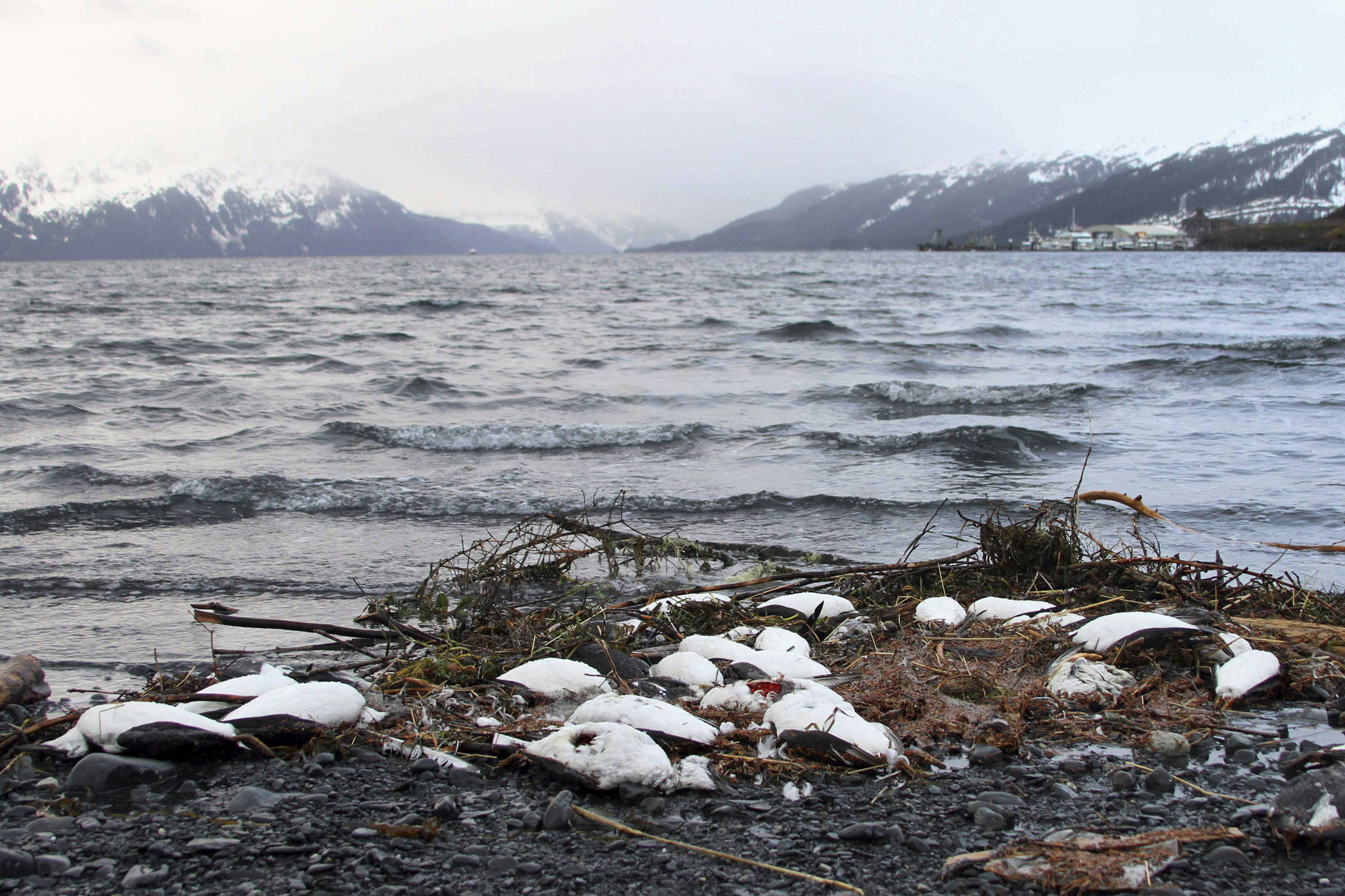ANCHORAGE — Federal wildlife officials are documenting a die-off of Alaska seabirds stretching from north of the Bering Strait to the Gulf of Alaska that may be connected to a trend of warming ocean water.
Carcasses examined so far have shown no indication of disease, and tests are pending for harmful algal toxins. Seabirds have been found emaciated and starved, and changed ocean conditions may have affected prey.
“As in the past, these die-offs have been associated with unusually warm water conditions,” said Katherine Kuletz, a U.S. Fish and Wildlife Service seabird biologist. “That’s only increased in the last few years.”
The Fish and Wildlife Service and the National Park Service in May received reports of dead and dying seabirds, or birds acting abnormally, north and south of the Bering Strait. Most were common or thick-billed murres.
Bird deaths along Saint Lawrence Island followed.
Reports from more southern communities, subsistence hunters and citizen scientists in the Coastal Observation and Seabird Survey Team, coordinated at the University of Washington, continued over the summer.
Officials recorded deaths of forktail storm petrels, fulmars, shearwaters, kittiwakes, auklets and puffins.
Bird die-offs usually are localized, Kuletz said.
The 2018 numbers have not matched a die-off in late 2015 and 2016, when hundreds of thousands of common murres died.
“I think what’s different is that the numbers, even though they’re in the dozens or hundreds, they’re widely dispersed and very highly concentrated in the north Bering Sea and the southern Chukchi Sea, which is unusual,” Kuletz said. “Most of our large die-offs have occurred in the southern Bering Sea or the Gulf of Alaska.”
Common murres, Uria aalgea, known elsewhere as common guillemots, are an indicator of the health of an ecosystem.
Plentiful in Alaska, murres eat finger-length forage fish such as capelin and juvenile pollock.
They have a high metabolism rate and must eat prey matching 10 to 30 percent of their body daily.
Common murres can fly miles seeking schools of fish. But if they can’t find them, they starve.
Biologists noted other troubling signs. Seabirds will not produce eggs if they’re not healthy and many never went to colonies, or showed up a month late.
“This was noticed by locals who harvest eggs and birds, some of the Native communities in more rural areas, and also by the National Maritime Refuge,” Kuletz said.
Birds that normally forage far off shore, such as fork-tailed storm petrels, were observed in large numbers near the coast.
“Which is also something we see when there’s a die-off occurring, or just prior to it — a shifting of the birds to in-shore waters, perhaps looking for food or calmer foraging conditions,” Kuletz said.
Federal agencies this week appealed to residents of coastal communities to send in reports to help assess the scope of the die-off.
“The only we way can piece together, to get a big picture, is to get this information from the public,” Kuletz said. “We don’t have an infrastructure that will allow us to send out people to survey for this.”
Agencies want accounts, photos and even frozen carcasses. Diseases could affect birds’ ability to forage, leading them to starve.
“We’re trying to make an effort to collect very fresh birds, or even birds that someone observes acting weird and dying,” she said. “If we can get them, and get them frozen quickly, we want to see if we can find any evidence of that.”
Seabird biologists later this year will try to piece together what is causing the die-off, Kuletz said, incorporating information collected on 2018 research cruises.
“Testing plankton, looking for algal blooms, see if we can connect hot spots of mortality with physical ocean features or prey conditions,” she said.


